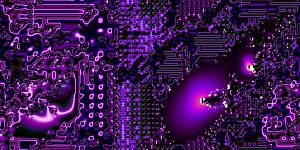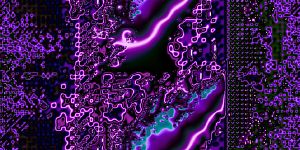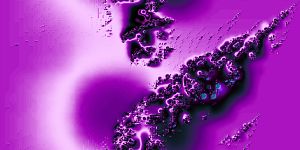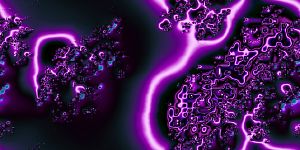






This was a generative work, with a computer and monitor set up in the hall. The screen is refreshed every 30 seconds, but it still takes about 4000 years to display all the prepared images!
The truth is that we can only touch a small part of this wide world, and we make up for most of the rest with our imagination.
This imagination is generally called a "concept. Concepts are compact, yet have the ability to illustrate any number of elements that belong to them as needed.
The motif of this work is the differentiation of genes and cells.
When an organism is born, a single egg cell repeatedly divides, and one cell forms the head, another the eyes and limbs, and so on.
Indals start with 16 colors randomly placed in 8 squares of 4 x 2.
This corresponds to an egg cell.
In the next division step, each square is divided into two squares, horizontally and vertically, resulting in 8x4 squares.
At this time, the color to be applied to the new square is calculated from the colors of the surrounding squares adjacent to the cell of interest using a certain rule. Repeating this division eight times results in an image of 1024x512 pixels as shown in the sample.
It is important to note that the process of division does not involve any uncertain factors. In other words, in this system, once the color scheme of the egg is determined, the growing form is uniquely determined. There are about 4.2 billion patterns in the color scheme of the first egg (16 to the 8th power).
What we see are small islands floating in the ocean of the real world. The title 'Indals' becomes Island when rearranged.